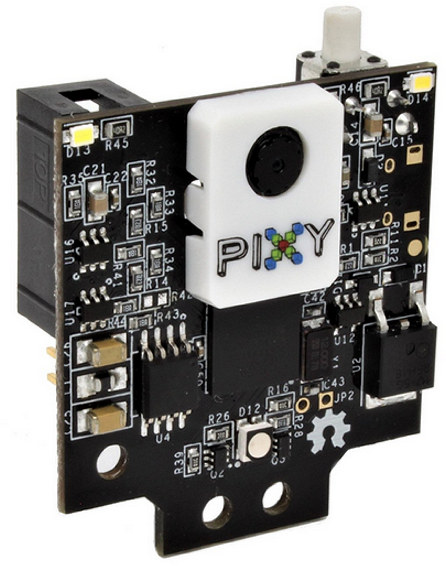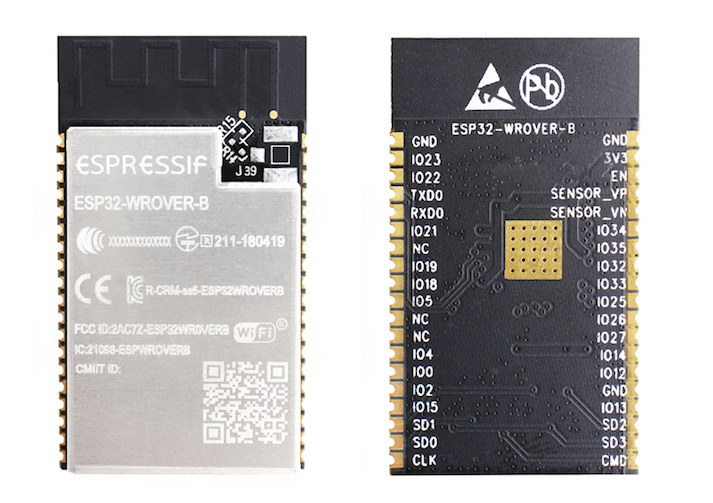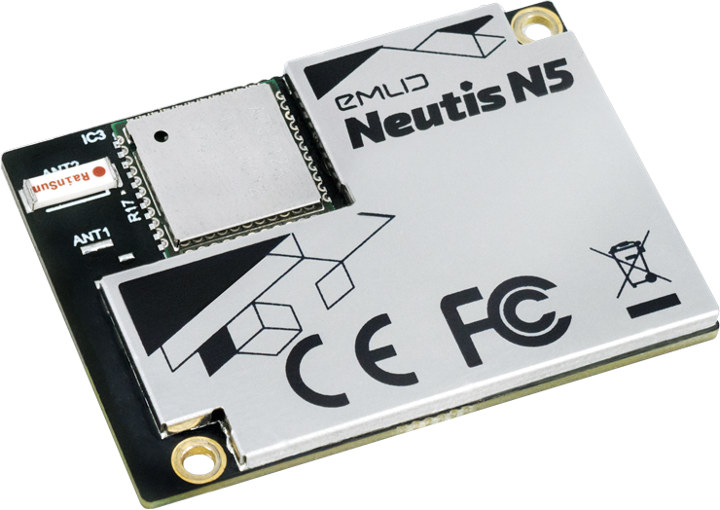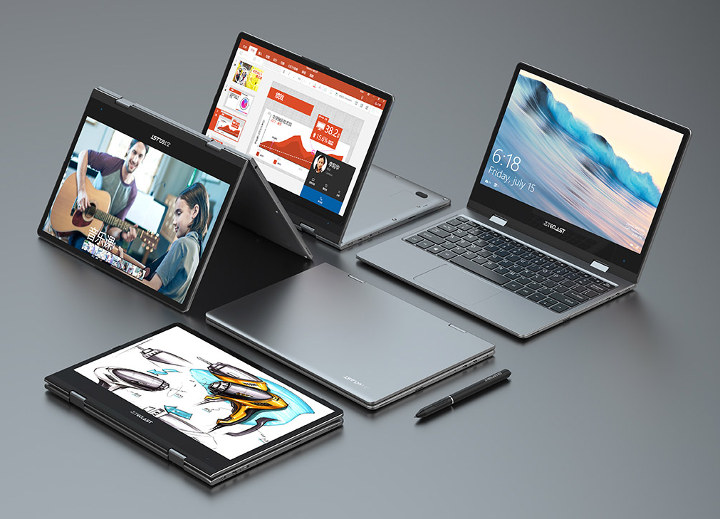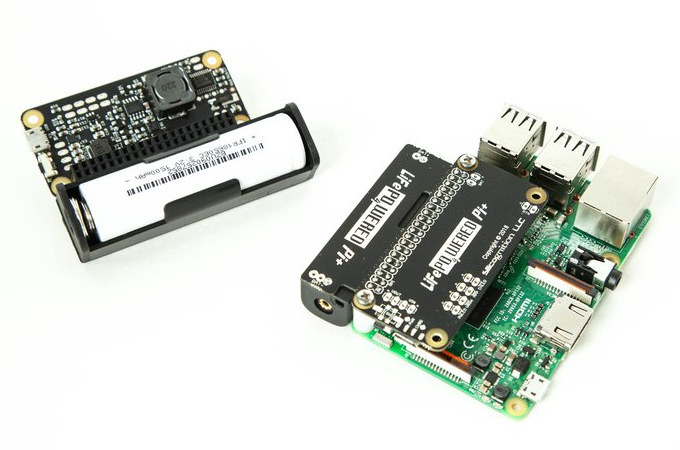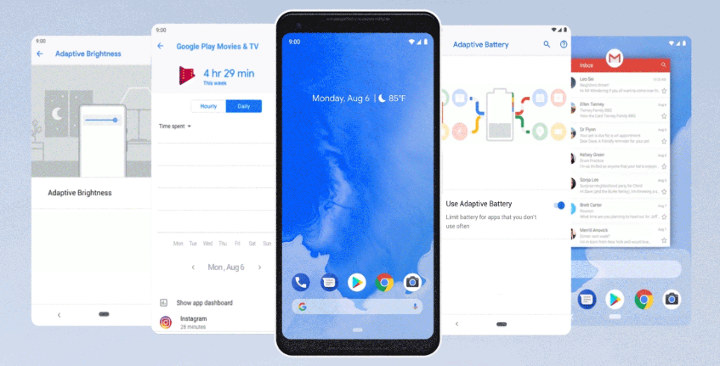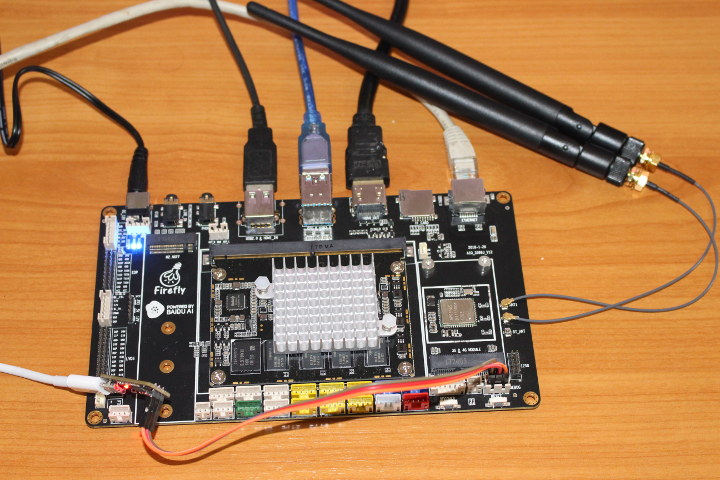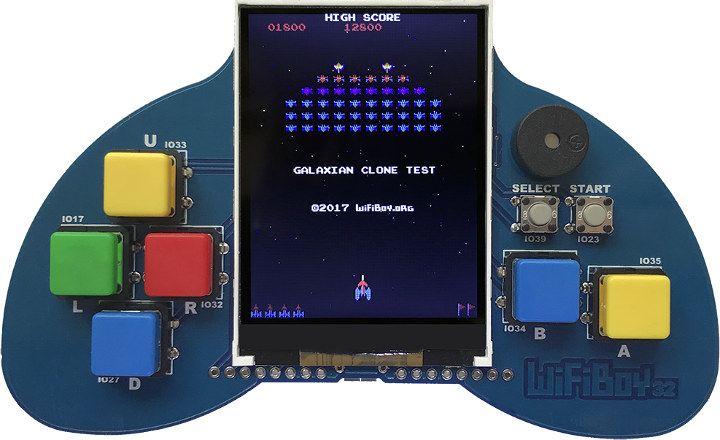Cameras may be used to take holiday photos, but when integrated into robotics projects there may purpose is usually to detect objects and/or patterns. We’ve previously covered specialized computer vision camera such as the Linux based JeVois camera powered by Allwinner A33 processor, HICAT.Livera machine vision board, or STMicro STM32F7 Arm Cortex M7 powered OpenMV Cam M7 open source computer vision board. Another popular option is PixyCam PIXY camera that was first launched via a Kickstarter campaign in 2013. The company has recently introduced an updated version, aptly named PIXY2, which can still detect objects – just faster at 60 fps-, and also includes new algorithms to detect and track lines or barcodes. PIXY2 camera specifications: MCU – NXP LPC4330 dual core Arm Cortex M4/M0 @ up to 204 MHz with 264KB RAM, 2MB flash Image sensor – OnSemi (previously Aptina) MT9M114 1296×976 resolution with integrated image flow processor Lens […]
Espressif Introduces ESP32-WROVER-B Module with 8MB RAM
ESP32 processor can support PSRAM, and so far I had seen boards or modules with up to 4MB RAM, but if you need more memory, Espressif Systems has now launched ESP32-WROVER-B module with 8MB SPI PSRAM. ESP32-WROVER-B module specifications: WiSoC – Espressif ESP32-D0WD with dual core processor up to 240 Mhz; 5x5mm package Connectivity 2.4GHz WiFi 802.11 b/g/n up to 150 Mbps Bluetooth 4.2 LE Two antenna designs: PCB antenna or IPEX connector External Memory – 8MB SPI Pseudo Static RAM (PSRAM) Storage – 4MB external SPI flash I/Os – Capacitive touch, SD card interface, Ethernet, SPI, UART, I2S, I2C, GPIOs, VP/VN, etc… Power Supply – 2.7 to 3.6V Dimensions – 31.4 x 18.0 x 3.3 mm Certifications – FCC/CE-RED/IC/TELEC/KCC/SRRC/NCC ESP32-WROVER-B should be software compatible with other ESP32 modules. It works ESP-IDF framework based on FreeRTOS with LwIP ( light-weight Internet Protocol). TLS 1.2 hardware acceleration is built-in, and secure OTA […]
Neutis N5 Allwinner H5 CPU Module and Development Kit are now up for pre-order
Emlid Neutis N5 system-on-module (SoM) powered by Allwinner H5 processor was unveiled right before Embedded World 2018 in February with an expected launch date scheduled for April. There have been some delays but the Allwinner H5 CPU module and corresponding development kit are now up for pre-order with delivery slate for the end of August. Neutis N5 SoM Neutis N5 specifications: SoC – Allwinner H5 quad core Arm Cortex-A53 processor @ up to 1.3 GHz with Arm Mali-450MP4 GPU System Memory – 512 MB DDR3 RAM Storage – 8 GB eMMC flash Connectivity – Wi-Fi 802.11 b/g/n. Bluetooth 4.0 dual-mode BLE with on-board antenna and u.FL connector for optional external antenna HW Security – Tamper-resistant dedicated crypto chip (secure element) for storing cryptographic keys, unique ID, random number generation and more 2x DF40 80-pin board to board X1 and X2 connectors with 38x GPIOs 4x UART, 3x I2C, 2x SPI, […]
Teclast F5 Laptop Features 11.6″ Fully Rotating Display, Celeron N4100 Processor, 8GB RAM, 128GB SSD
Teclast F5 is another Gemini Lake laptop based on Intel Celeron N4100 processor, with this model including a 11.6″ full HD display that can fully rotate thanks to a 360° hinge, and coming with 8GB RAM and 128GB SSD. Teclast F5 laptop is now up for pre-order on GearBest for $369.99 with free worldwide shipping. The presale ends on August 12th, and as I understand shipping starts the next day. Teclast F5 specifications: SoC – Intel Celeron N4100 quad core Gemini Lake processor @ 1.10 GHz / 2.40 GHz (Turbo) with Intel UHD graphics 600 ; 6W TDP System Memory – 8GB DDR4 Storage – 128GB M.2 2242 SSD (expandable), micro SD card slot Display – 11.6″ FHD (1920×1080) IPS touchscreen display Video Output – Micro HDMI port Audio – Stereo speaker, microphone, 3.5mm audio jack, digital audio output via HDMI Connectivity – Dual band 802.11 b/g/n/ac WiFi and Bluetooth […]
LiFePO4wered/Pi+ is a Safer and Longer Lasting UPS for Raspberry Pi (Crowdfunding)
We’ve already covered several UPS solution for Raspberry Pi boards, but LiFePO4wered/Pi+ is a little different because instead of relying on LiPo (Lithium Ion Polymer) batteries, it comes with LiFePO4 (Lithium Iron Phosphate) battery which are said to be safer and longer-lasting albeit at the cost of lower capacity. LiFePO4wered/Pi+ specifications: Two battery size options: 18650 size – 1,500 mAh 3.2 V LiFePO4 cell with up to 2A max continuous load current 14500 size – 600 mAh, 3.2 V LiFePO4 cell with up to 0.75 A max continuous load current Smart charge controller – Over-charge protection, auto-adjusting charge current, customizable maximum power point (MPP) voltage Smart power manager: I2C communication Power manager and daemon – work together to ensure clean shutdowns and provide over-discharge protection Continuous monitoring – input voltage, battery voltage, output voltage, and load current On/off button Green PWR LED & Red CHRG LED Wake timer – Wakes […]
Android 9 “Pie” Released – Download Firmware Images and AOSP Source Code
After several Android P developer previews and Android P beta releases, Google has now officially released Android 9 “Pie” operating system which brings new features leveraging artificial intelligence such as adaptive battery, app actions or slices, as well as support for WiFi RTT indoor positioning, displays with notch, a new neural API, and so on. I’ve already covered the new features in previous posts, so I won’t go over them again in this post. There’s however a new service/app called Digital WellBeing, which I had not heard of before, and which aims at helping you taking time away from your phone. It will officially launch this fall, but Pixel phone owners can apply for the beta version. You can install Android 9 on your phone by downloading the firmware images (or via OTA) if you own one of the following phones “Google Pixel 2 XL “taimen”, Google Pixel 2 “walleye”, […]
AIO-3399J Development Board Review with Ubuntu 16.04
Regular readers will know that Firefly team sent me several of their Rockchip boards for evaluation, and I started with a review of ROC-RK3328-CC development board powered by Rockchip RK3328 processor. This time, I went with the high-end AIO-3399J board comprised of a features-packed baseboard and a Rockchip RK3399 system-on-module. Just like with the previous review, I’ve decided to focus on Linux support, in this case Xunbuntu 16.04, and I’ll do an Android review on the company releases Android 8.1 for Firefly-RK3399 board. First Boot with AIO-3399J Board Before booting the board, I inserted the heatsink, and connected the provided WiFi antennas. I also connected some devices and cables, including a mouse, the male to male USB cable to the top USB 3.0 (OTG) port for firmware update, a HDMI cable to my TV, and Ethernet cable, as well as the serial debug board. The final step was to connect […]
WiFiBoy32 is an ESP32 Portable Game Console and IoT Devkit
I’ve noticed that ever since Hardkernel launched their ODROID-GO “10th anniversary” portable game console based on ESP32 processor, most of the talk on IRC and social media is about this new toy, and people almost seem to have forgotten about the company’s Arm Linux boards 🙂 But recently, I’ve come across a somewhat similar ESP32 device called WiFiBoy32 that acts as both a portable game console and an IoT development kit. WiFIBoy32 specifications: Wireless module – ESP32-WROOM-32 wireless module with 802.11 b/g/n WiFi and Bluetooth 4.2 LE connectivity Display – 2.4″ 240×320 color SPI TFT LCD display Expansion – 2x 8-pin through holes with GPIOs, SPI, DAC, I2S,ADC, VP/VN, and power signals (3.3V, Vin, GND) Misc Top – 6x large gaming buttons, select and start push buttons, buzzer Bottom – PROG and RESET buttons, user LED USB – 1x micro USB port for power and programming (CP2102) Dimensions – 120 […]


